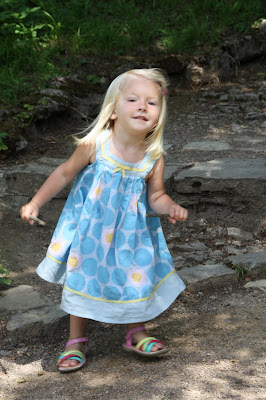OK, I know this isn't the most pleasant of subjects for blogging, but I want to share anyways... On Sunday after visiting Weimar we stopped at Buchenwald, which is the remnants of a concentration camp, just outside the city.
A little history:
Buchenwald was one of the first and the largest concentration camps on German soil. It was not an extermination camp, but rather a forced labor camp which had mainly prisoners from all over Europe and Russia—Jews, non-Jewish Poles and Slovenes, religious and political prisoners, Roma and Sinti, Jehovah's Witnesses, criminals, homosexuals, and prisoners of war. It was also one of the locations where human scientific experimentation was regularly carried out on the prisoners. The estimated number of deaths while under Nazi control is estimated at over 55,000.
After liberation, between 1945 and 10 February 1950, the camp was administered by the Soviet Union and served as a Special Camp No. 2 of the NKVD. A total of 7,113 people died in Special Camp Number 2, according to the Soviet records.[25] They were buried in mass graves in the woods surrounding the camp. Their relatives did not receive any notification of their deaths. Prisoners comprised alleged opponents of Stalinism, and alleged members of the Nazi party or Nazi organization, others were imprisoned due to identity confusion and arbitrary arrests.
Although it was highly unusual for German authorities to send Western Allied prisoners of war (POWs) to concentration camps, Buchenwald held a group of 168 aviators for about six months.[32] These POWs were from the United States, United Kingdom, Canada, Australia and New Zealand.
Elie Wiesel and Marcel Dassault were among the famous prisoners held here.
Buchenwald was the only concentration camp where "Arbeit Macht Frei" was not on the camp gate. Instead it reads "Jedem das Seine" which translates literally to "to each his own" but in German figuratively means "everyone gets what he deserves," - remember that political prisoners and social "undersirables" were mainly held here...
The prisoner's barracks were demolished in the 50's, but they still have the foundations and footprint of each building. The buidlings were originally designed to hold 80 horses, but housed instead approximately 1,200 men, 5 to a bunk.
This view must have been torture in itself.
Bodies found outside the crematorium when the camp was liberated.
The bodies were dumped through a chute into this cellar, and then loaded onto a elevator to bring them up to the ovens. The hooks you see along the walls were used to hang people as a form of execution.
They reconstructed an old building that no longer exists to show how 8000 Soviet POWs were murdered in a two year time span. The building was set up so that POWs were asked to disrobe before seeing a doctor. Then as they waited in a chamber that appeared for all intents and purposes to be a doctors office, they were told to stand next to a height scale to be measured, nose to the wall. They were then shot in the nape of the neck. The floor of this special room was wooden slats and painted red, so that the blood just ran away, and the next prisoner could be called in.
Tree used for torturing prisoners (reconstruction.)
Many visitors follow the Jewish custom of placing a stone on the memorial plaques for the dead.
Gallows used at Buchenwald, now a part of the indoor exhibition.
Prisoner's renditions of what it was like to be hung from the tree previously pictured.
Other depictions done by inmates illustrating their experiences.
Don't know what this was, but the leg holes make it clear that it wasn't pleasant.
-





































































